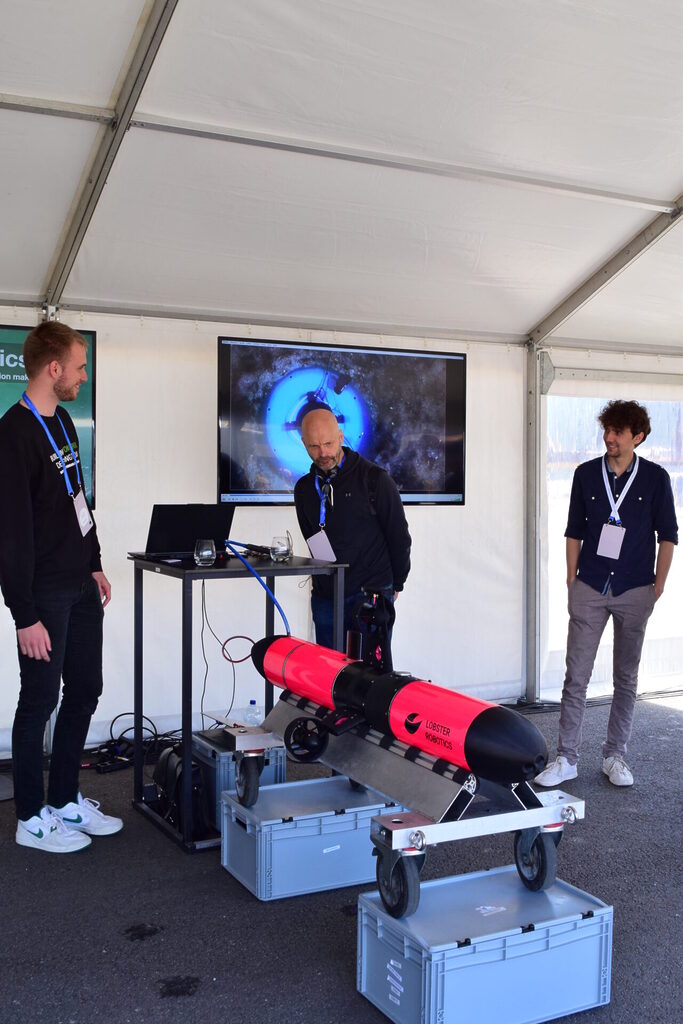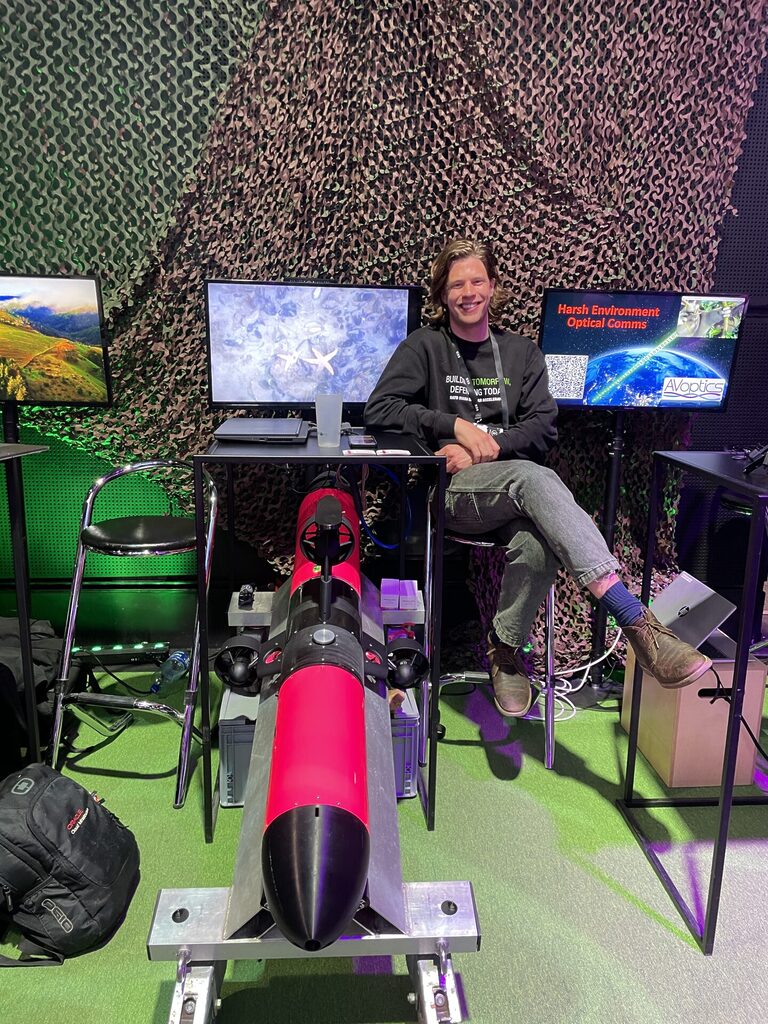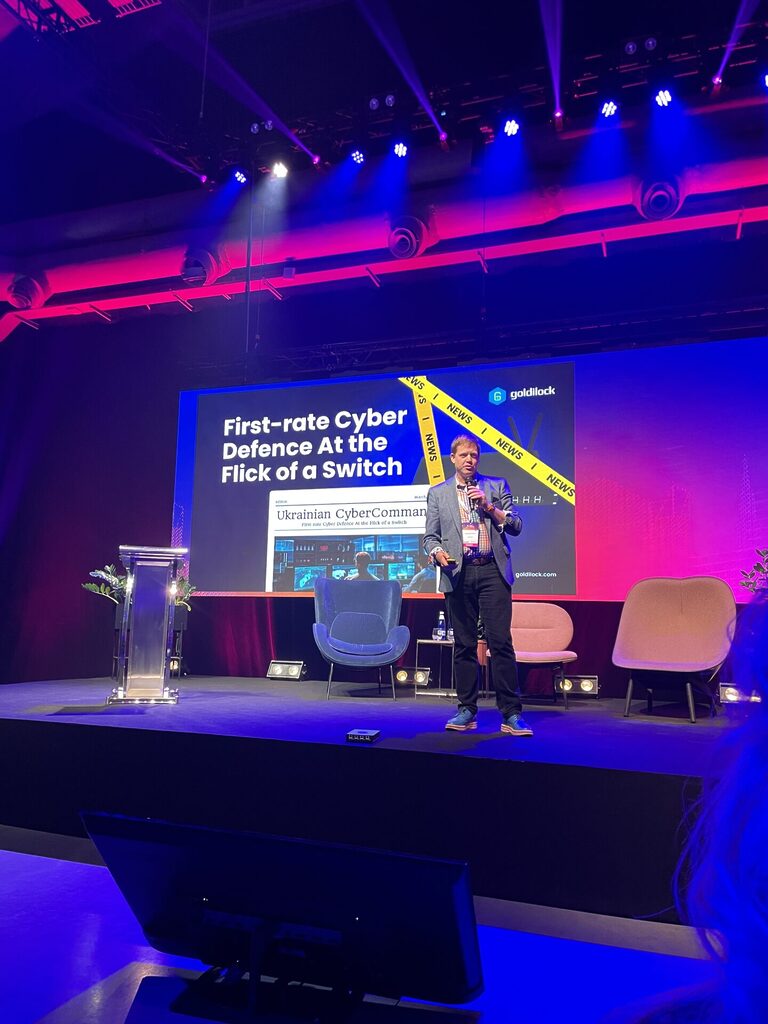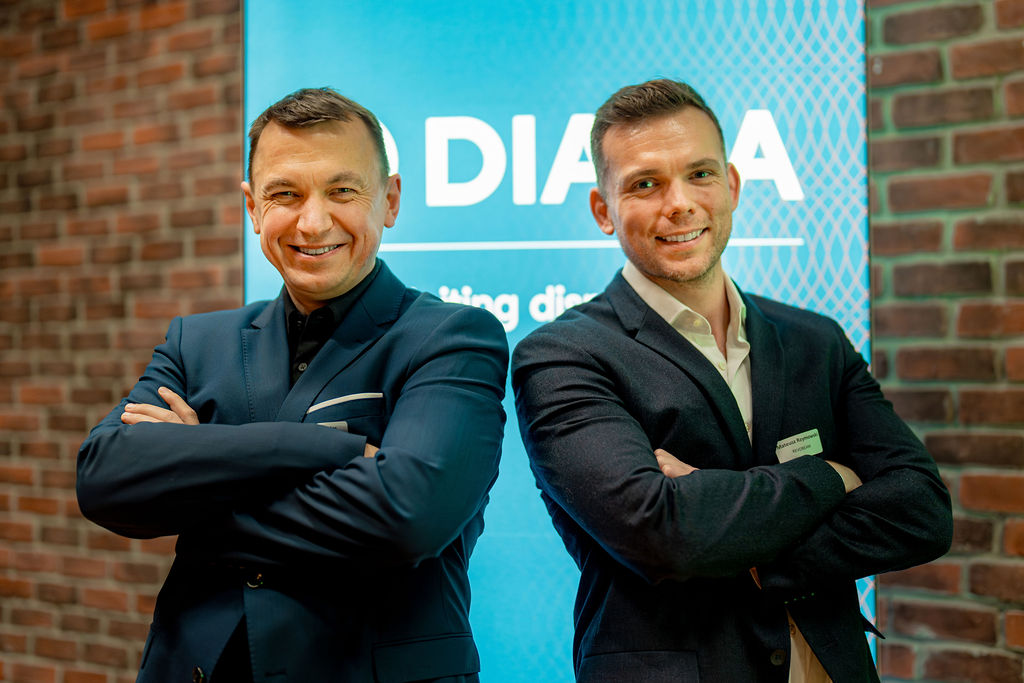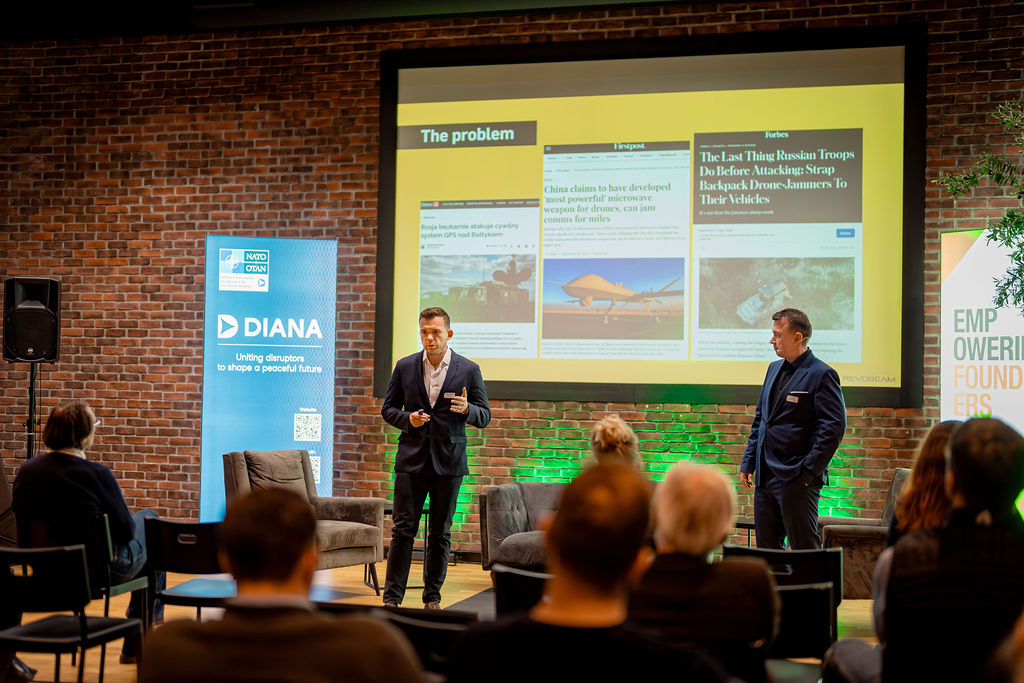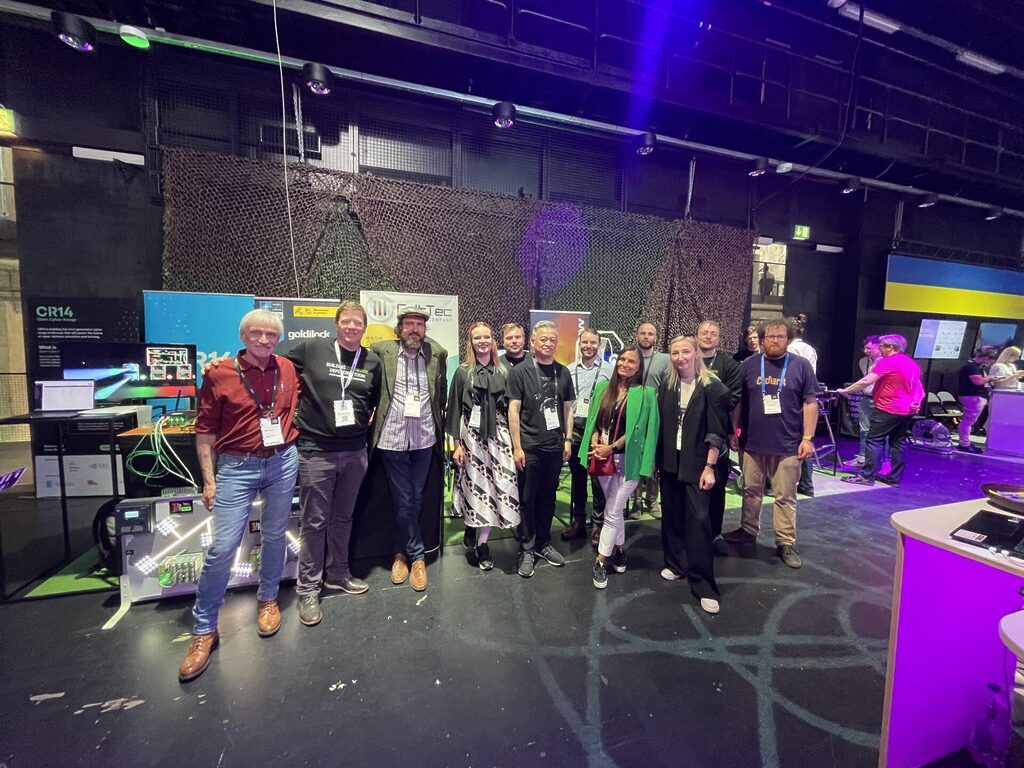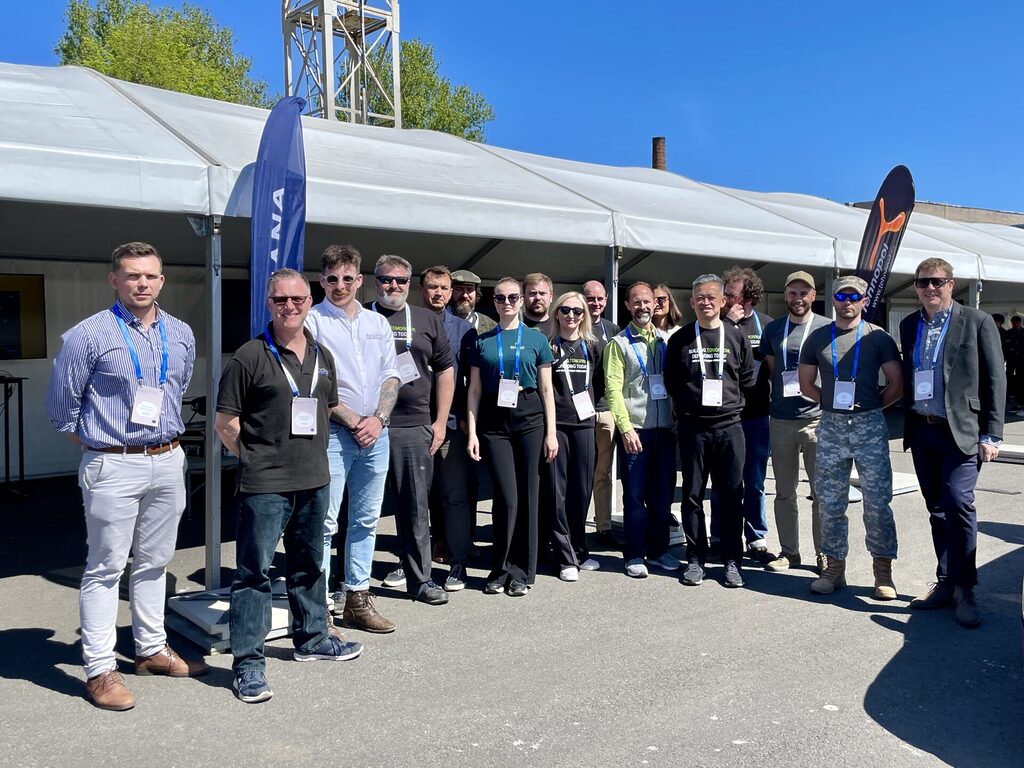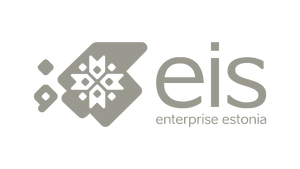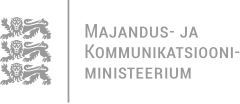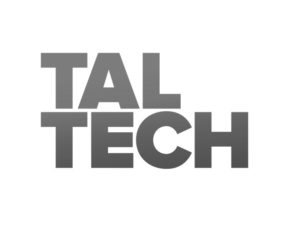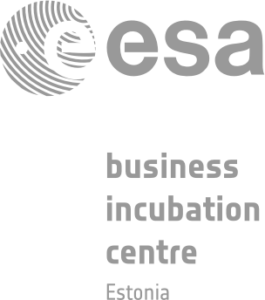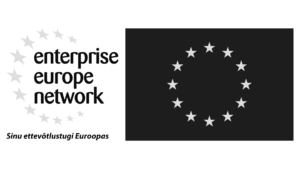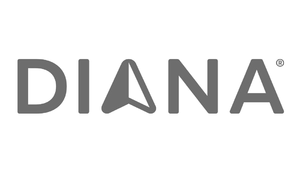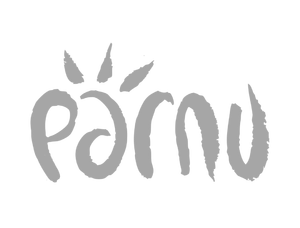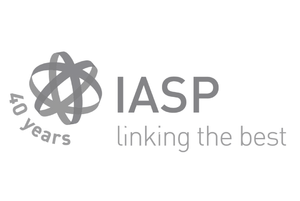The Estonian NATO DIANA accelerator got off to a stylish start with a well-attended opening event at Tehnopol
Teams from the second cohort of the Estonian NATO DIANA accelerator came to Estonia for their first time last week. The two busy days in a forest camp were followed by workshops in Tallinn and meetings with the local testing centres. The highpoint of the day was the evening opening event, which was attended by the media, expert mentors, investors, the government and the armed forces, and other groups involved in national defence.
Opening speeches were given by Sigrid Rajalo, Director of the Innovation and Technology Department at the Ministry of Economic Affairs of Estonia, and by Mayor of Tallinn Jevgeni Ossinovski.
“The private sector is the driving force for ground-breaking innovation in defence, and DIANA is the key to bridging the gap between the private sector and the military structures of the NATO alliance”, said Estonian Minister of Defence Hanno Pevkur in a video address.
The NATO DIANA accelerator in Estonia is led by a consortium of the Tehnopol Startup Incubator working together with Sparkup Tartu Science Park, and both Anne-Liisa Elbrecht, the Head of the Tehnopol Startup Incubator, and Pirko Konsa, a member of the Sparkup Tartu Science Park board, spoke of the power of cooperation that the Estonian accelerator can harness as a partner.
NATO DIANA Regional Director Kadri Tammai and Project Manager at the Challenge Team of DIANA Nourhan Ibrahim spoke about this year’s challenges and how the programme can affect the whole of the alliance. There were 2613 companies that applied to the accelerator for 2025, of which 74 were accepted, and seven of the successful applicants have come to the accelerator in Estonia.
The seven superstars for 2025 are Scaleout, Factiverse, ResQuant, IS-Wireless, Microamp, Telearmy and Wayren, and they each gave an exciting three-minute pitch for their dual-use technologies, which demonstrated their potential by creating great interest in the subsequent networking discussions over a glass of bubbly.
The presentation by CTO of Revobeam Łukasz Kulas was particularly special because it shared some experience of the process, as Revobeam was part of the first cohort in the NATO DIANA Estonian accelerator and has moved on to the second phase of the programme.
The official part of the evening ended with a discussion of funding, needs, and testing in the defence sector by a panel comprised of CEO of Frankenburg Technologies Kusti Salm, CEO of SmartCap Sille Pettai, and Special Advisor for Defence Industry Development at the Ministry of Defence of Estonia Indrek Sirp. The discussion was chaired by Liisu Lass.
The teams will meet again in February at a defence industry meeting in Poland that will be attended by all the teams in the NATO DIANA accelerator in 2025 from across the whole alliance. In the time between the meetings in person, the teams will have to attend virtual sessions and participate in regular meetings with their dedicated mentors.
The full gallery from the opening event can be found here.

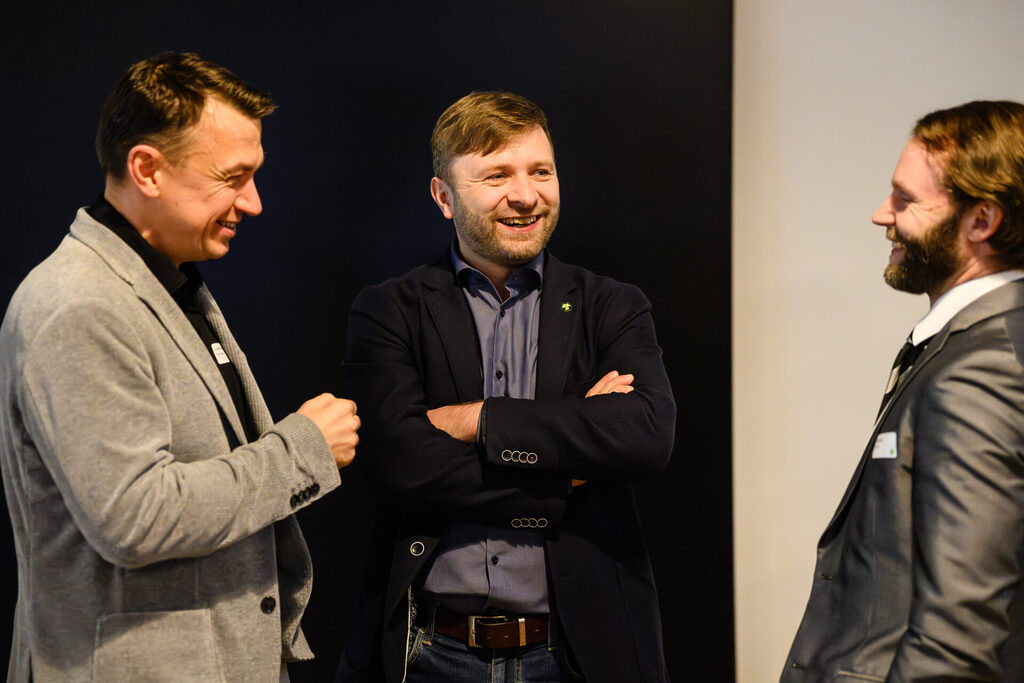
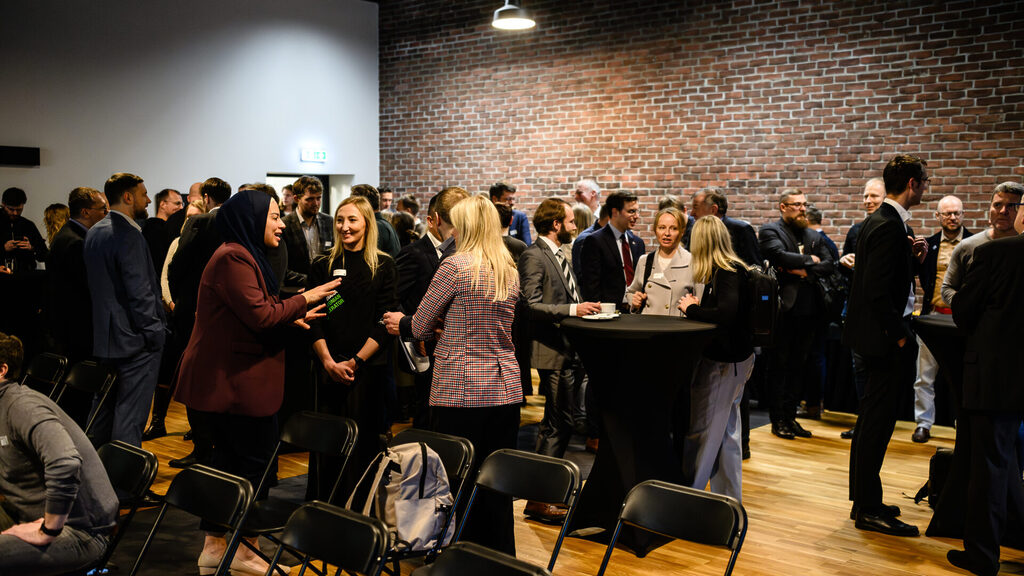
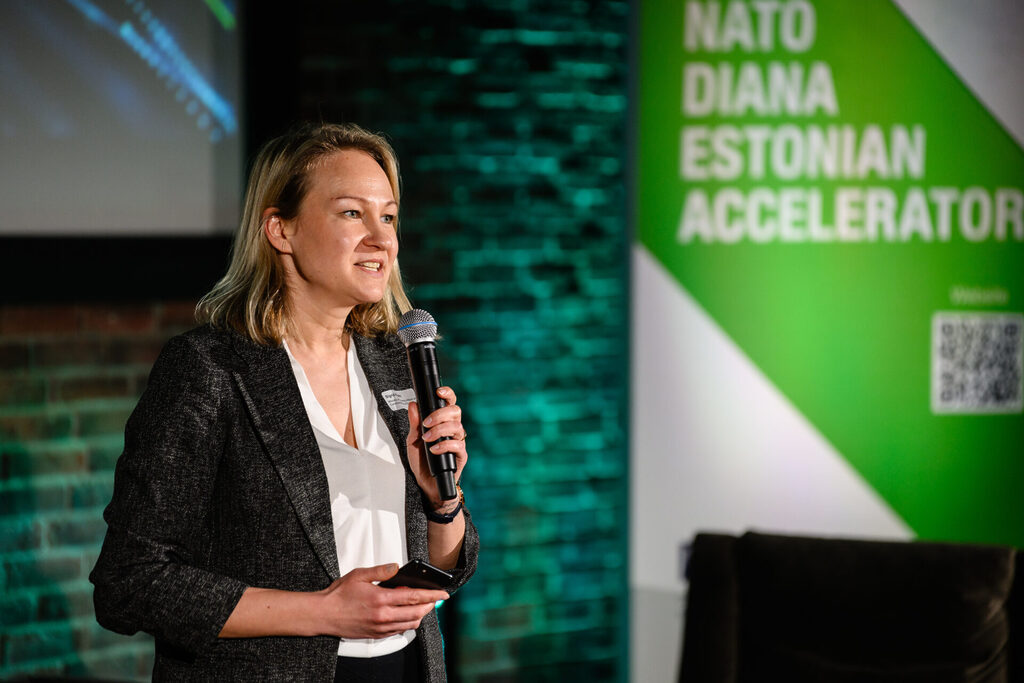

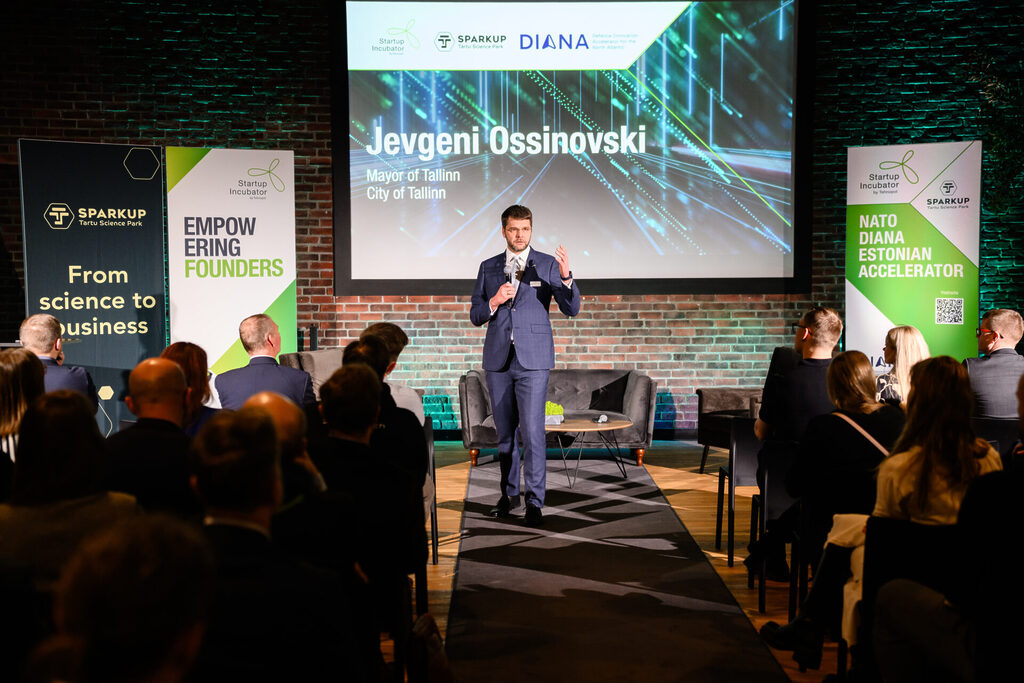
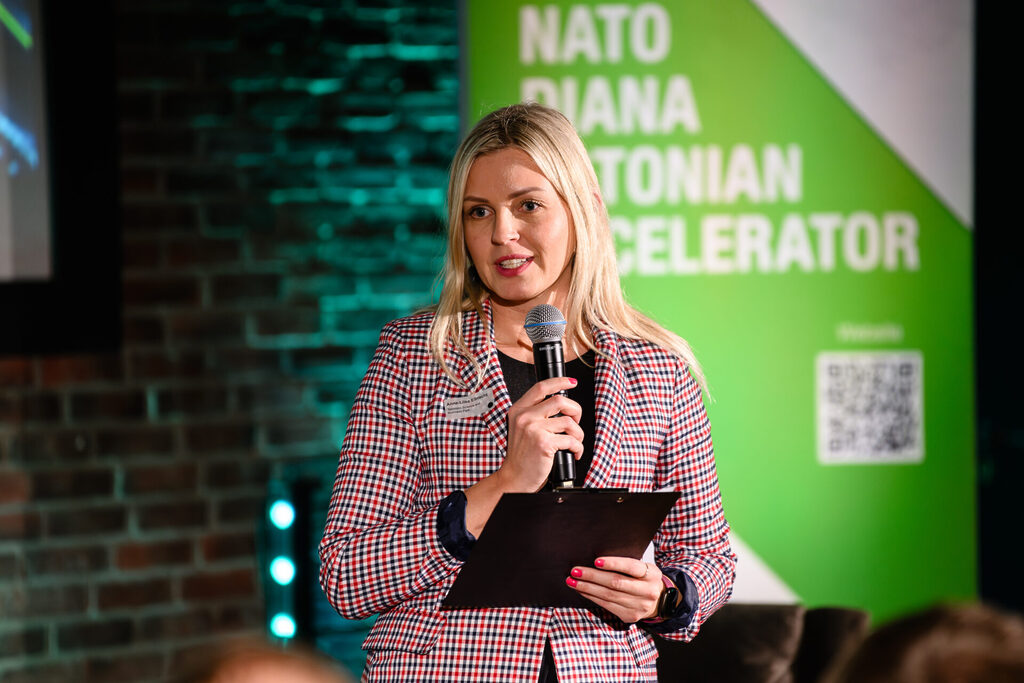
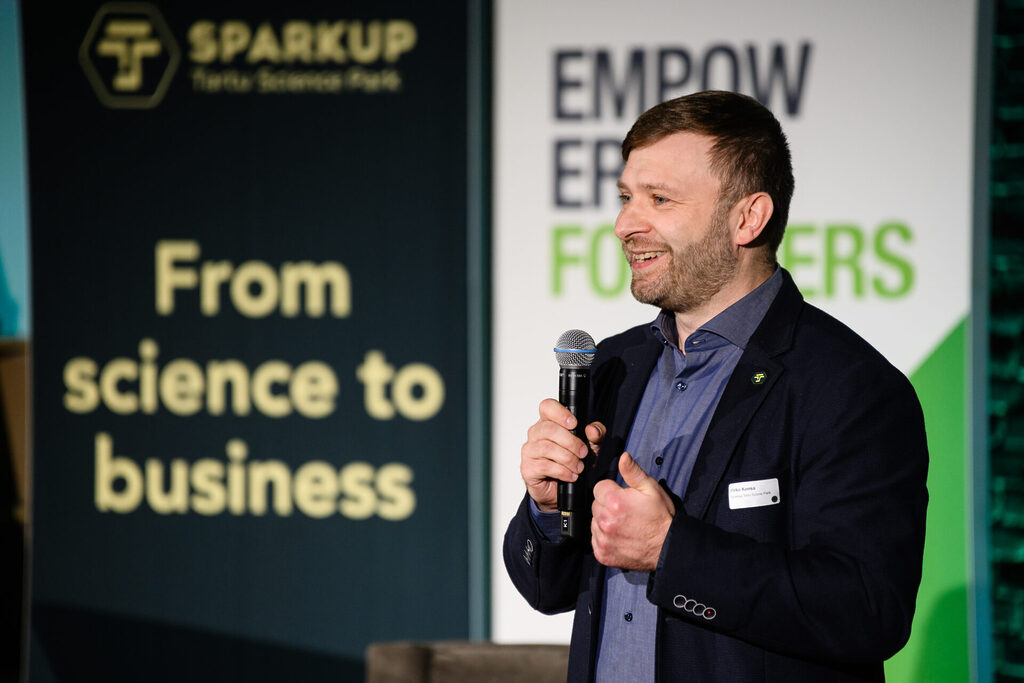
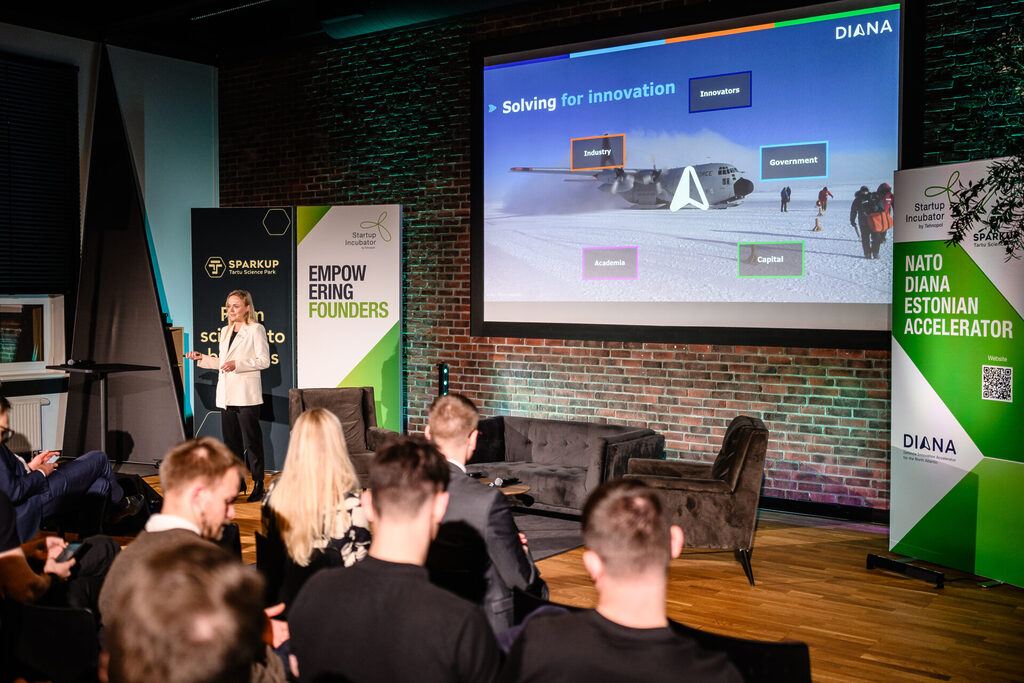
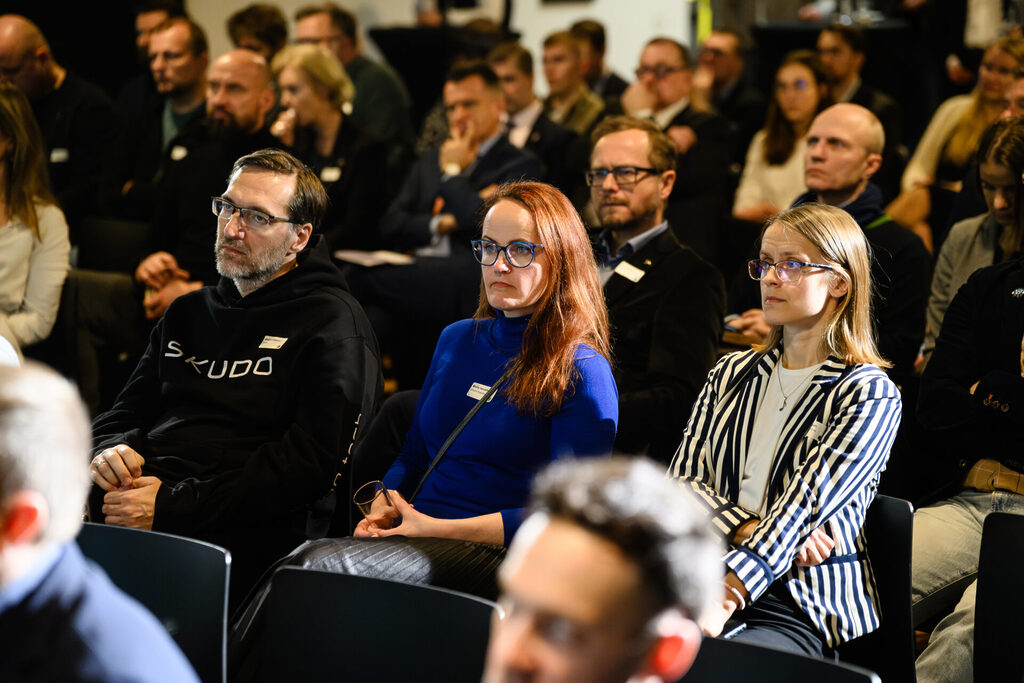
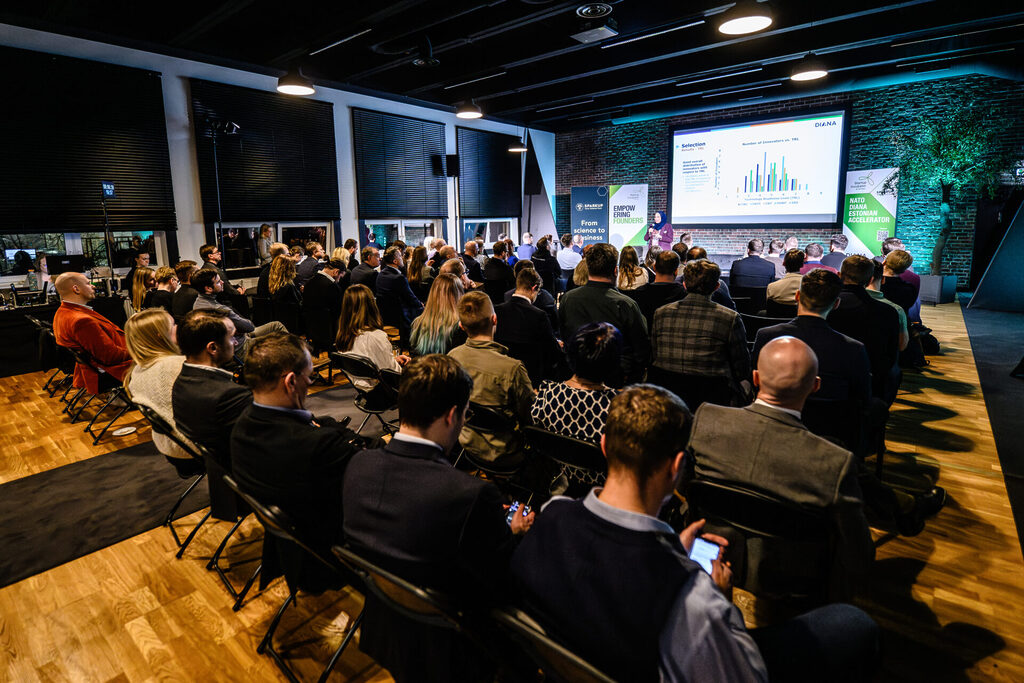
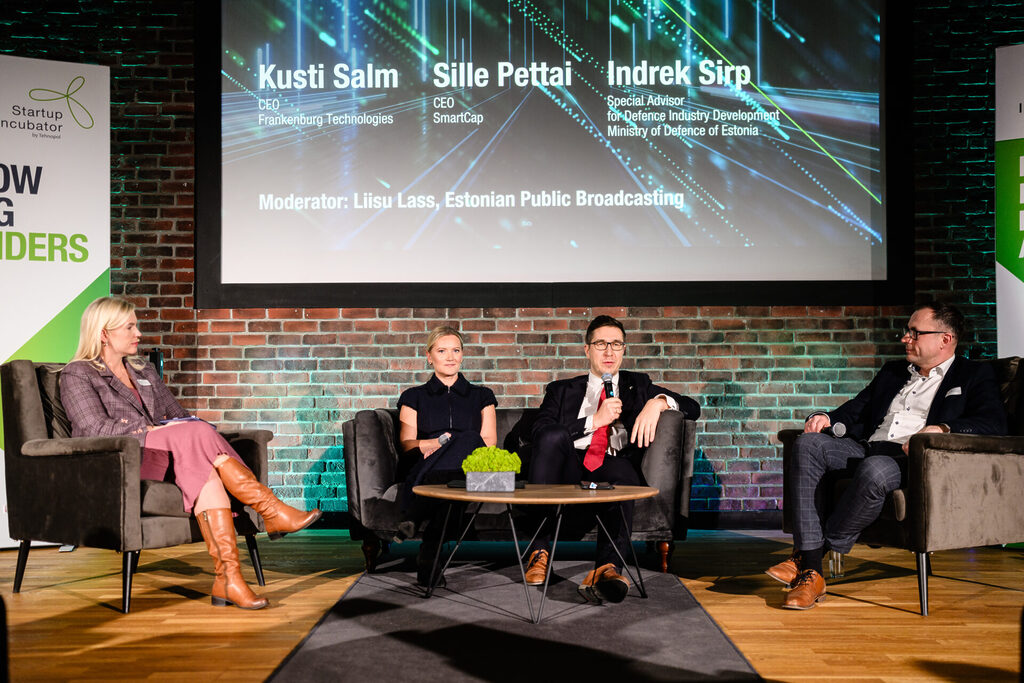
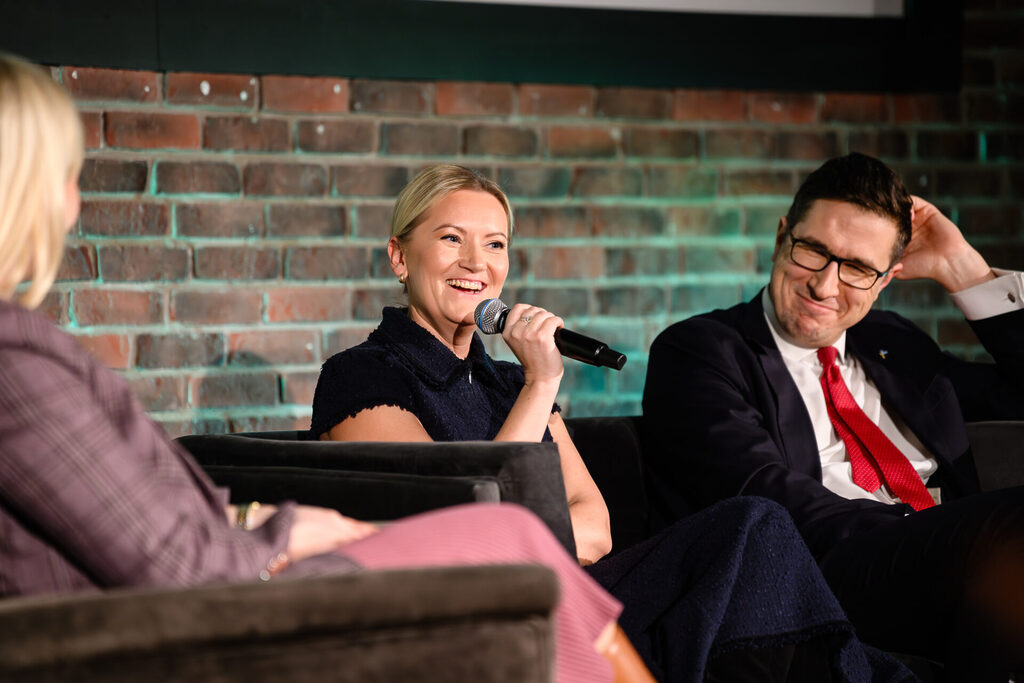
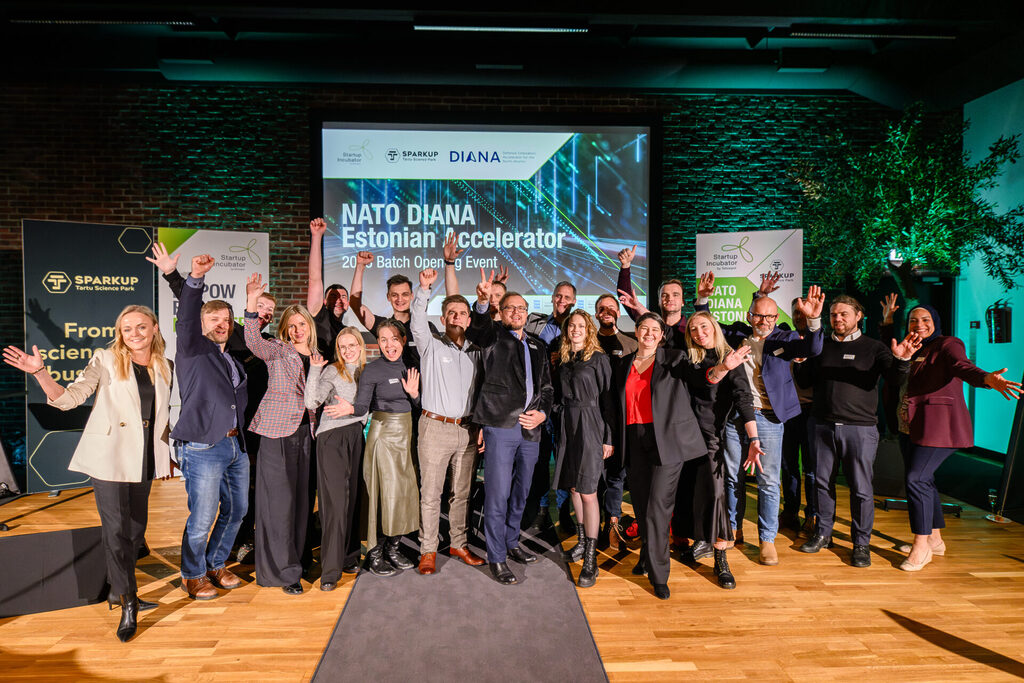
Gallery from the forest camp of the NATO DIANA Estonian accelerator
Teams from the second cohort of the Estonian NATO DIANA accelerator met in Estonia for the first time in January. They spent two days of a busy week of training in a forest camp at the Roosta Holiday Village. The location deep in the countryside allowed the seven companies accepted by the accelerator – Factiverse, Scaleout, IS-Wireless, ResQuant, Microamp Solutions, Telearmy and Wayren – to ignore all outside distractions and focus on practical training and individual meetings.
The key themes of the forest camp were leading a team, differences from the world of startups, business models for dual-use solutions, and product development. The teams from Poland, Estonia, Sweden and Norway were supported by trainers from the Combat Ready team and by Villiko Nurmoja and Tauri Tuubel.
Head of the Tehnopol Startup Incubator Anne-Liisa Elbrecht said the teams were full of enthusiasm to get going: “All seven teams came to Estonia to get the most they can out of the programme. The feedback from the forest camp has been very encouraging and the teams are very much looking forward to being able to come to Estonia again in March”.
Co-founder and CTO of Microamp Solutions Marcin Góralczyk agreed: “I am certain that the NATO DIANA Estonia accelerator will boost our sales and help the company develop a long way”.
The base for the camp gave the teams not only training, but also the chance to go for walks through the snow by the sea, and try out the local sauna traditions. On the journey back to Tallinn they had fully switched back into work mode though, and the bus was lit up by laptop screens in the darkness as the startups worked on their pitches for the opening event the next day.
The accelerator in Estonia is run by the Tehnopol Startup Incubator working together with Sparkup the Tartu Science Park. The funding to start the accelerator in Estonia comes from the Ministry of Economic Affairs and Communications with support from the Ministry of Foreign Affairs, the Ministry of Defence and the city of Tallinn. Estonian contributors to building the pan-Alliance network of testing centres are TalTech, the University of Tartu, Foundation CR14, the National Defence College, the Estonian Academy of Security Sciences, the Estonian Aviation Academy, and Metrosert.
The full gallery from the forest camp can be found here.
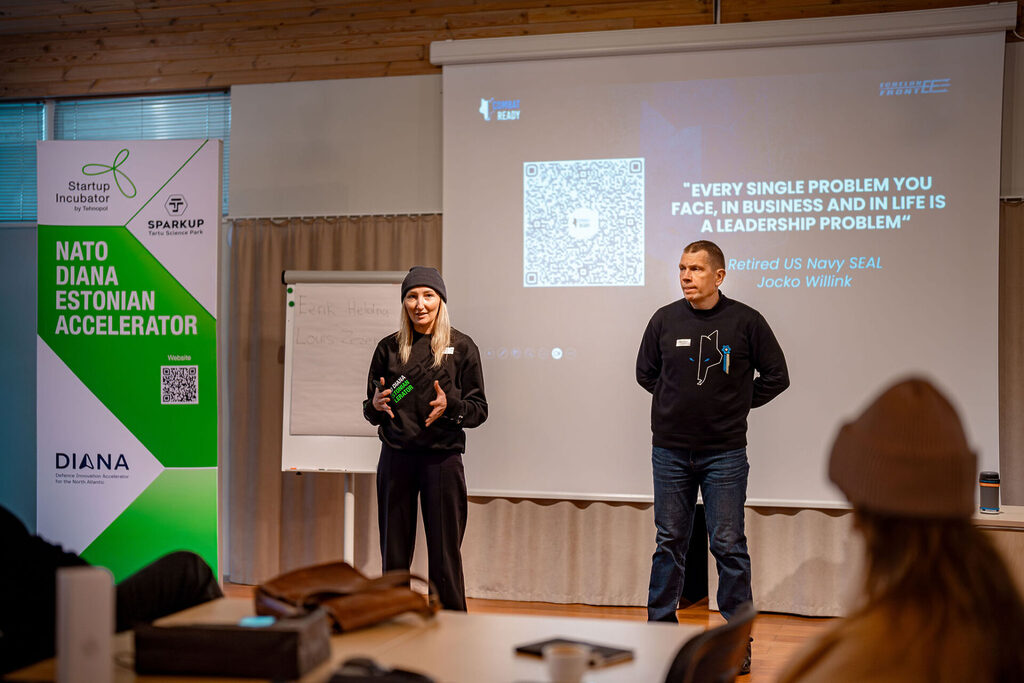
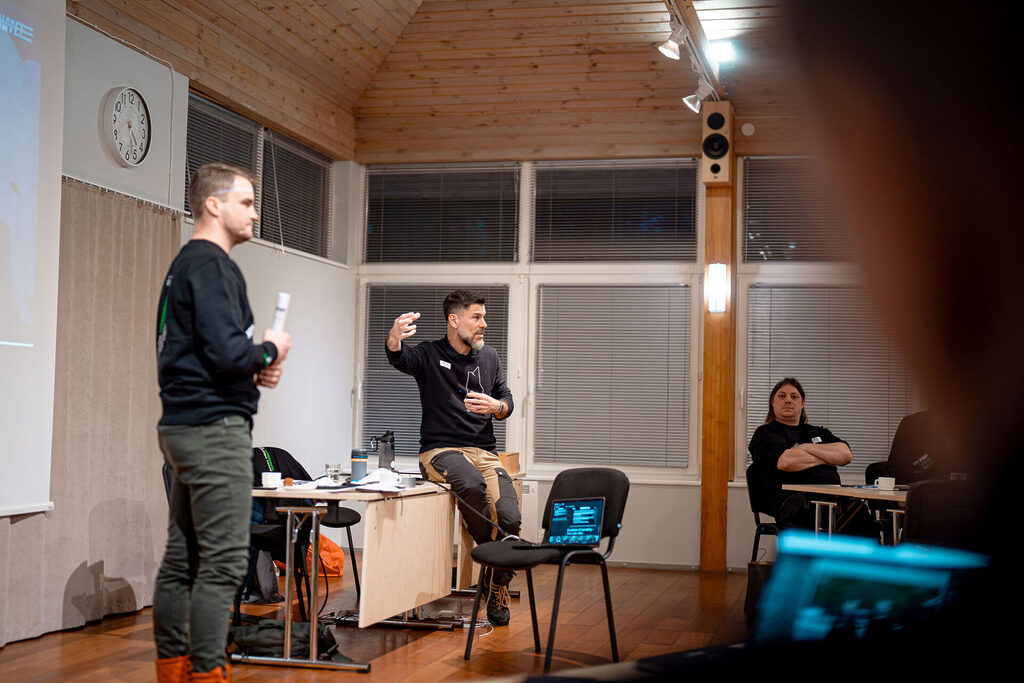
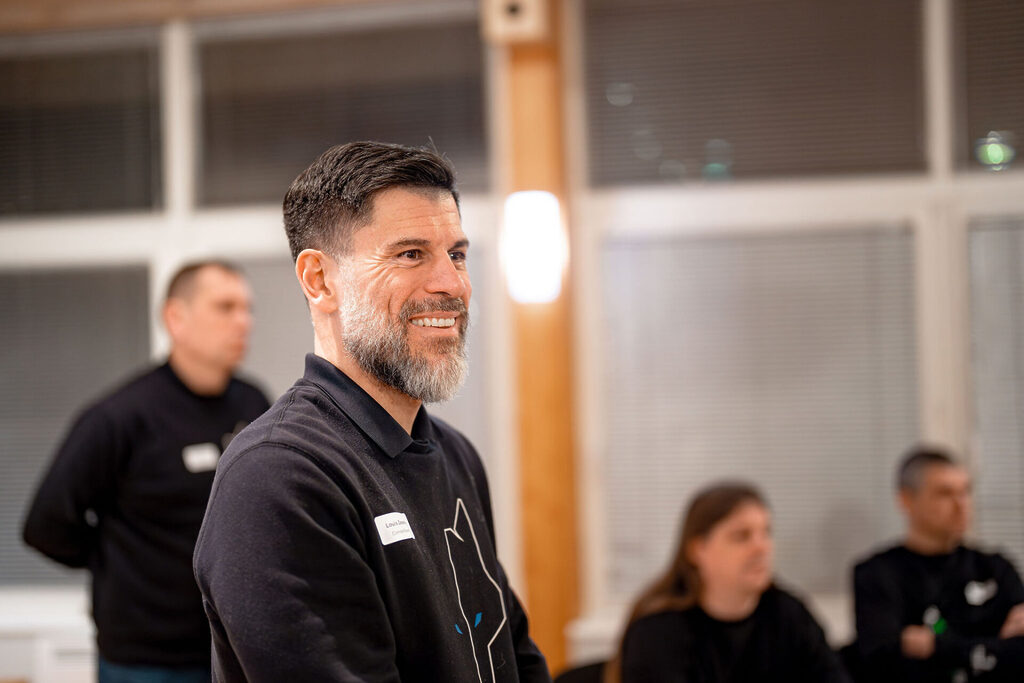
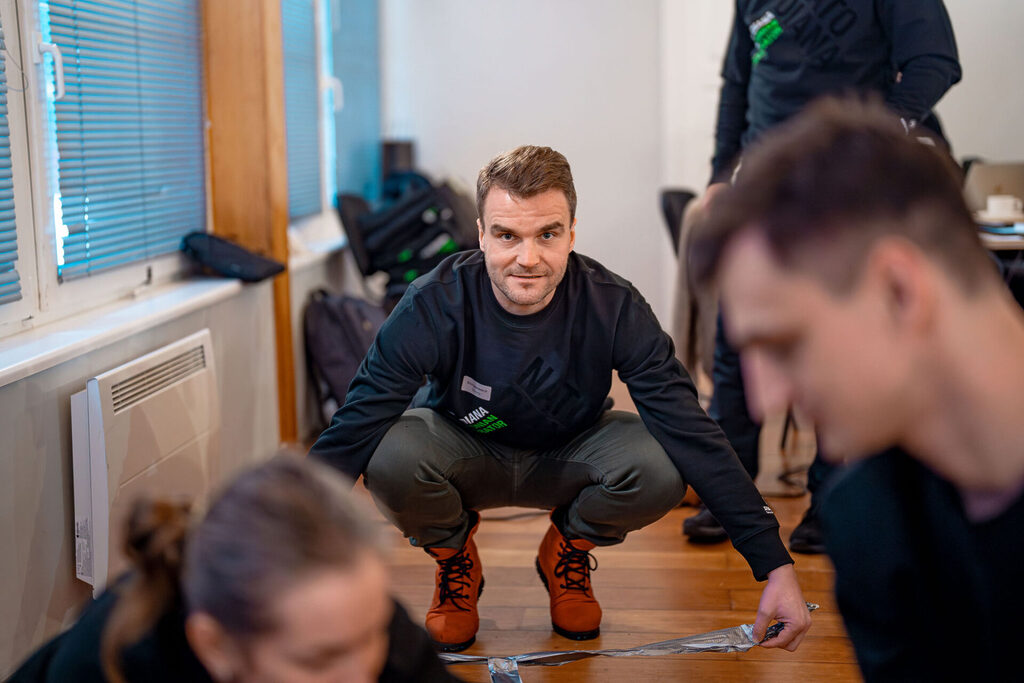
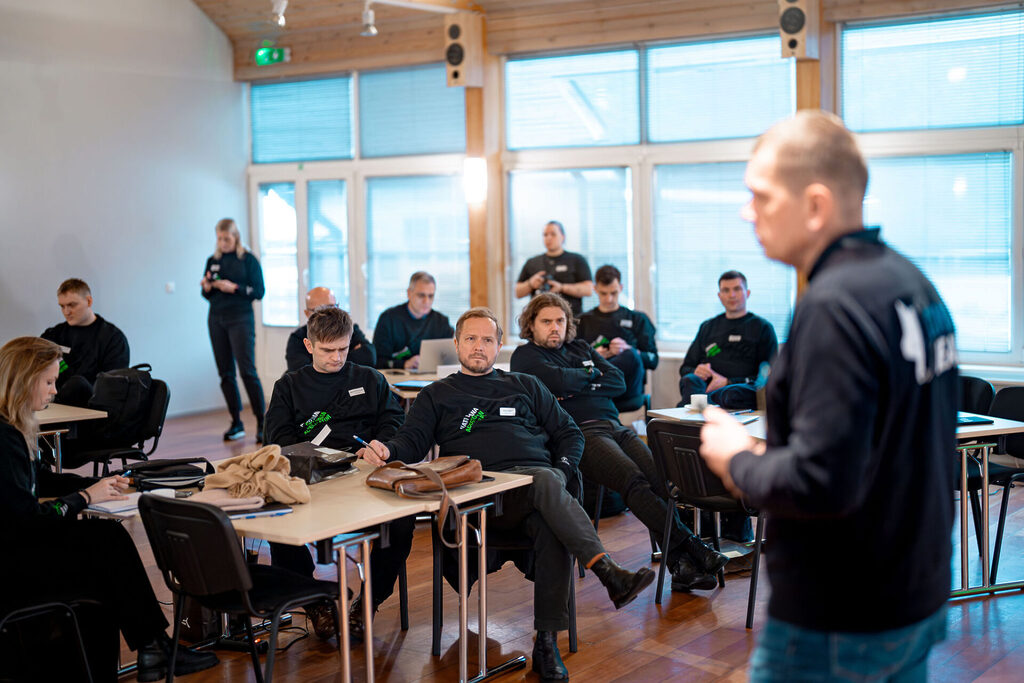
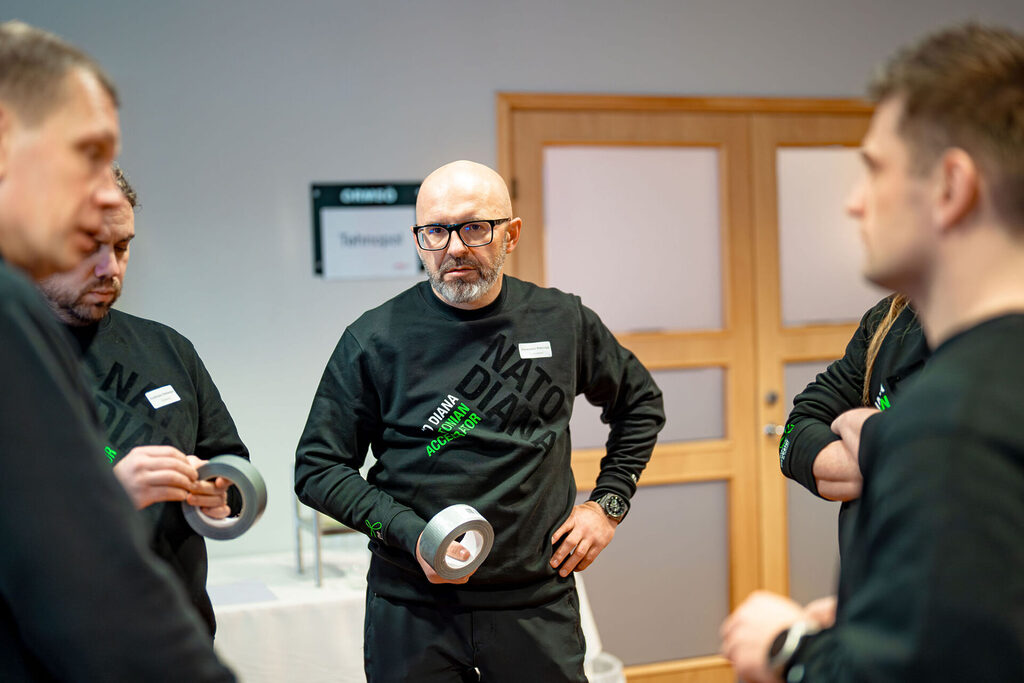
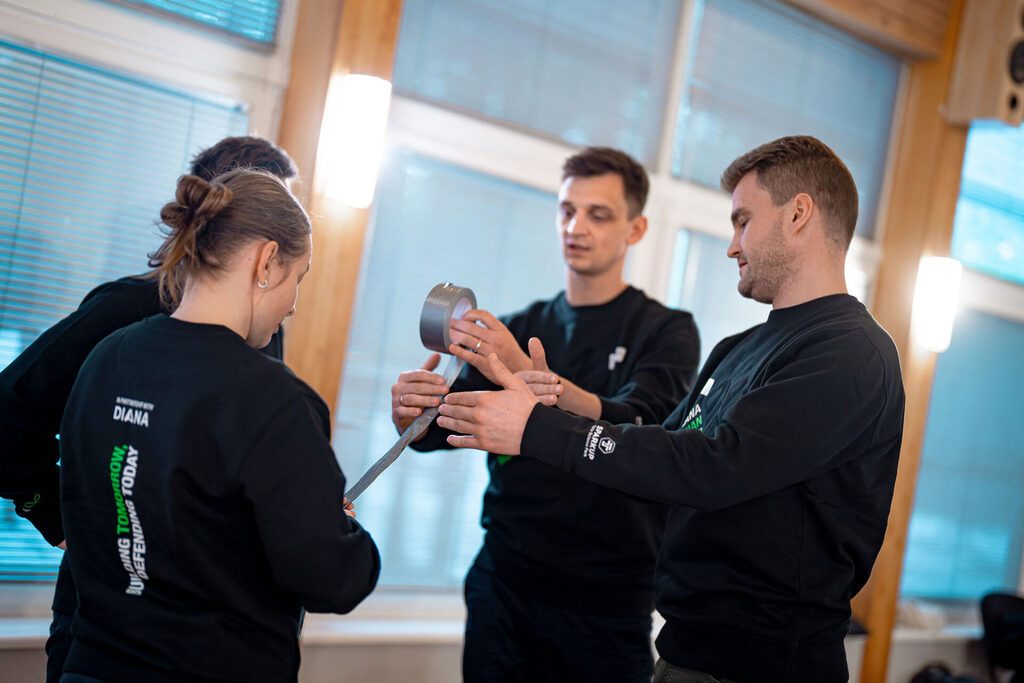
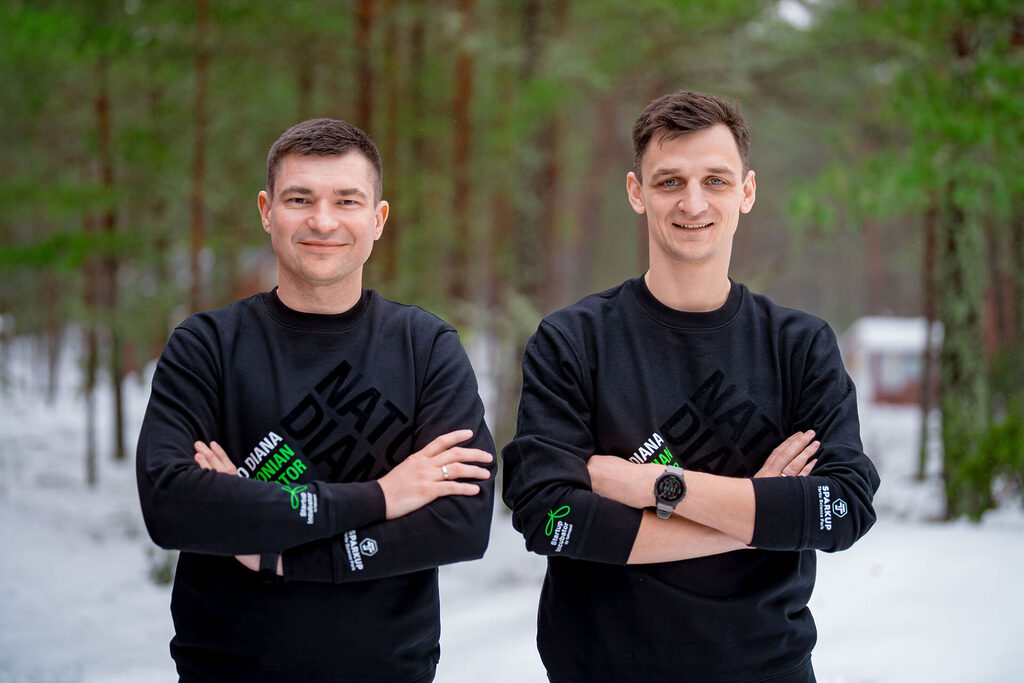
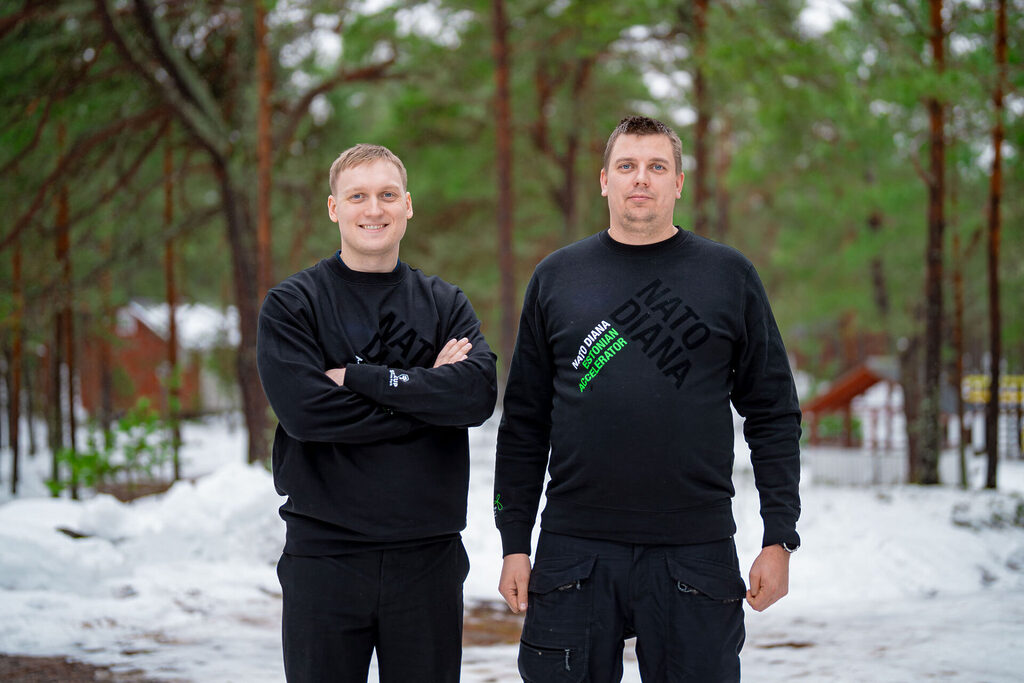
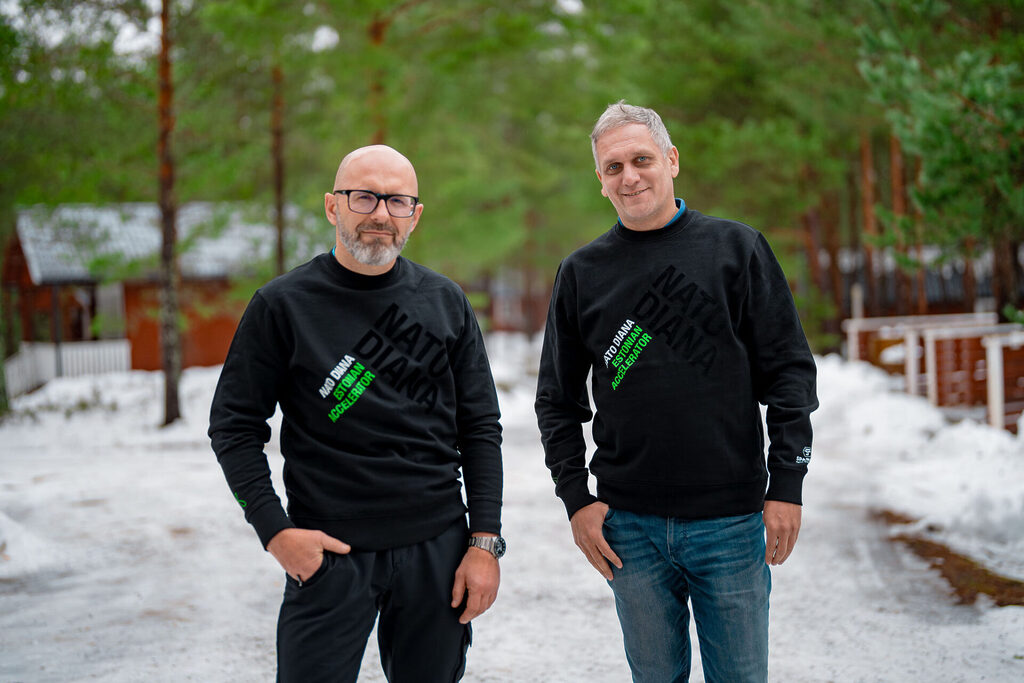
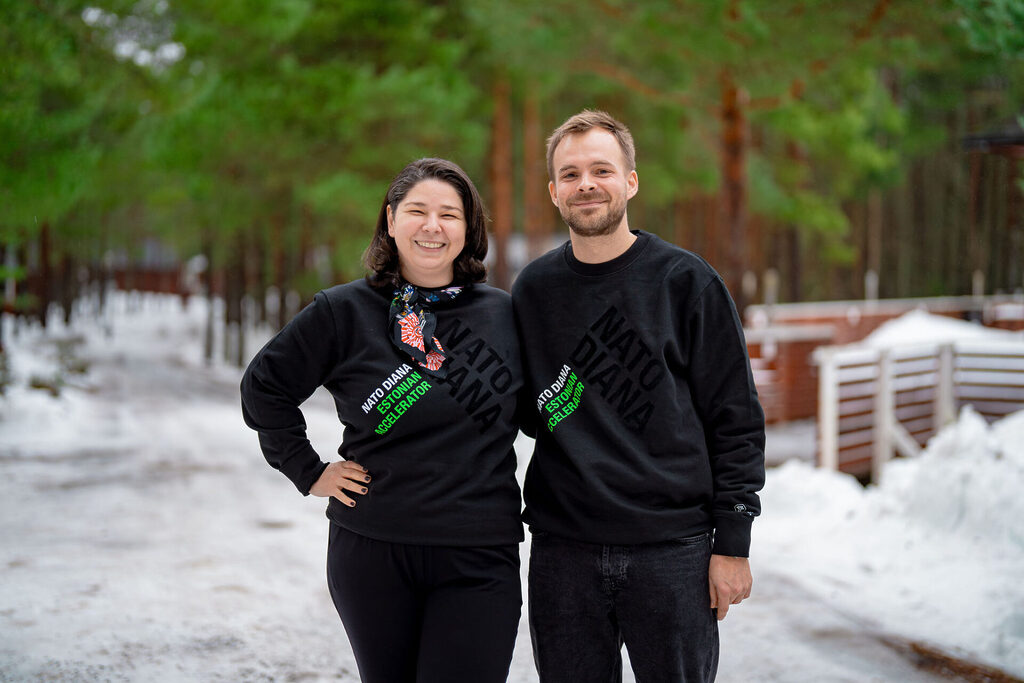
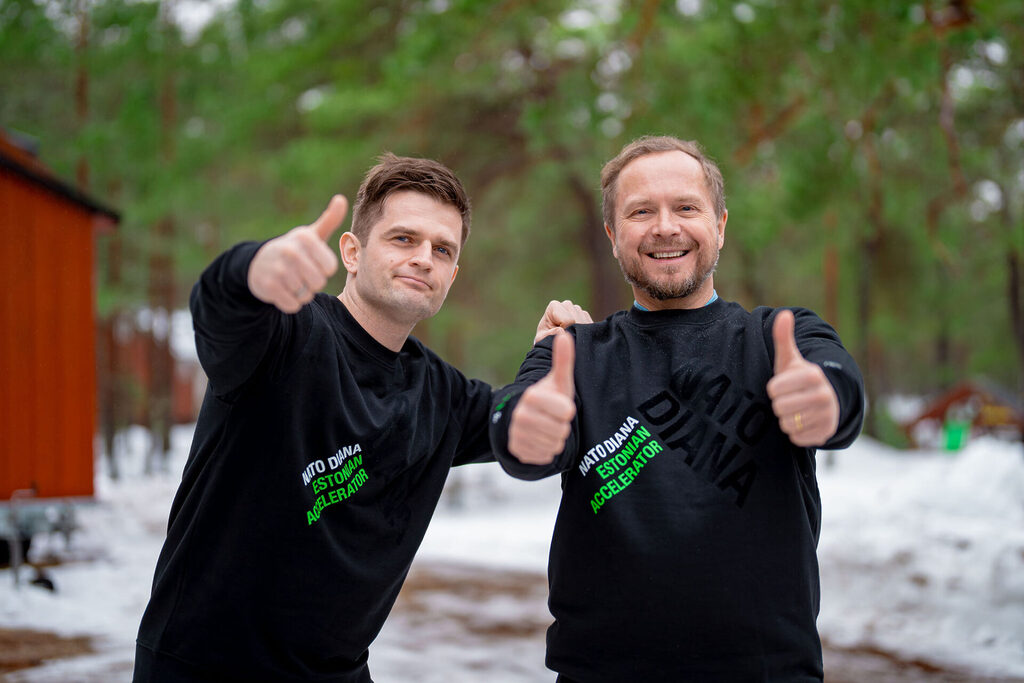
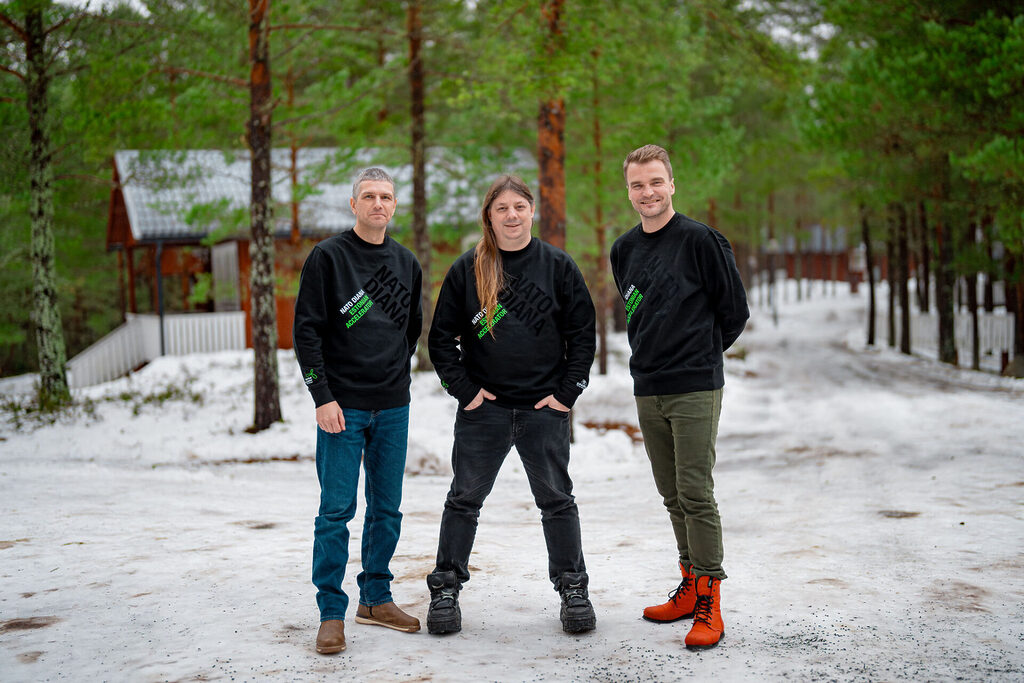
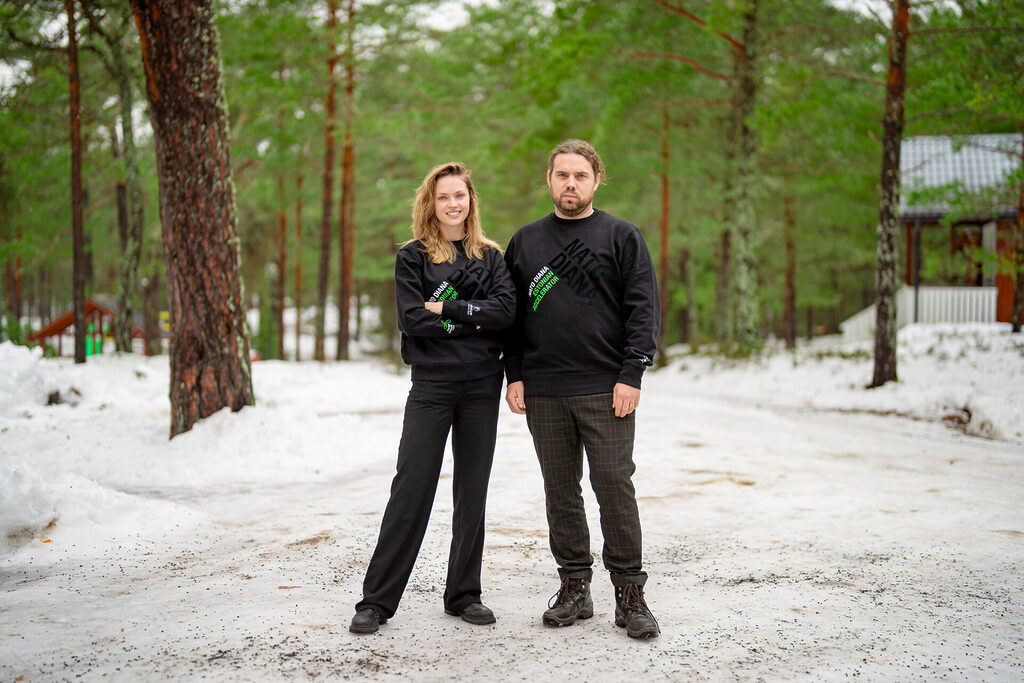
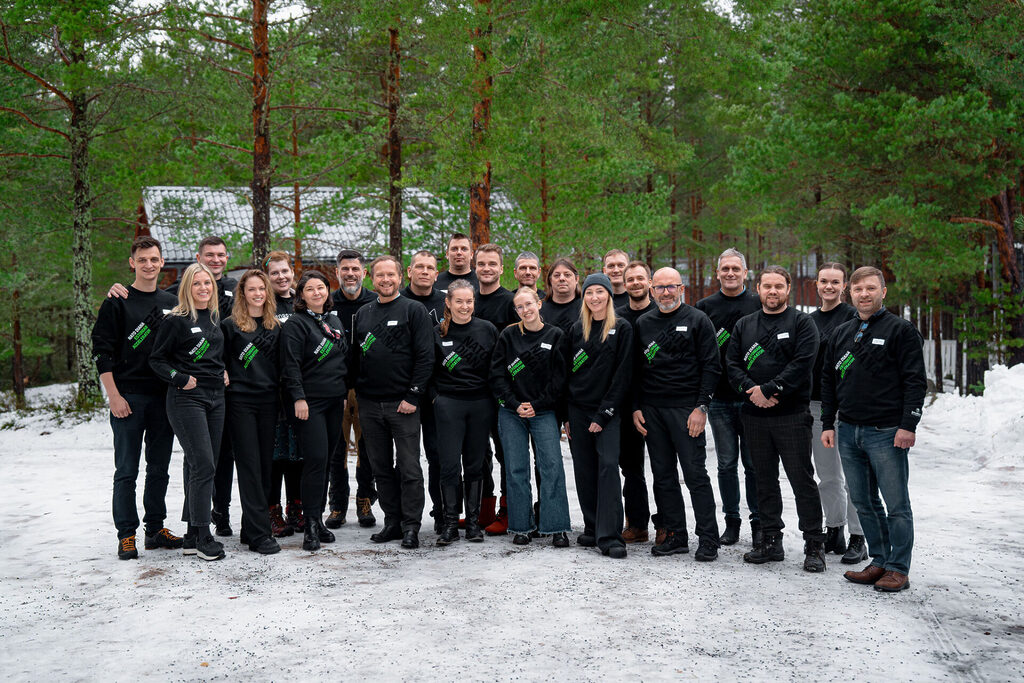
Cyber defense, underwater drones and wave energy: the companies shaping phase 2 of NATO DIANA’s accelerator
The companies that will participate in the NATO DIANA accelerator in Estonia in 2025 were announced recently. The participants in the 2024 programme are also still busy in it though, as three companies that got through to the second phase in the Estonian accelerator will remain there until February. Who are they and what are the solutions that they use to contribute to our security?
Every startupper knows by now that DIANA has nothing to do with the British Princess of the same name, but it does not hurt to repeat what Diana is. The NATO DIANA accelerator has two phases. Over 1300 companies applied to the accelerator in 2024, and 44 of them were chosen to participate in the first phase of the programme. Nine of those 44 companies started their road to development in Estonia, where the innovation accelerator is led by the Tehnopol Science and Business Park working together with Sparkup, the Tartu Science Park.
At the end of the first phase, the top 10 companies were chosen from among those participating. The dual use deep-tech innovators who showed the greatest potential continued into the second phase of the NATO DIANA accelerator in September 2024. This brought them additional funding of up to 300,000 euros and one-to-one support in finding investment and commercial opportunities.
Three of the ten companies are continuing to work in Estonia, and they are Lobster Robotics, Dolphin Labs and Goldilock.
British company Goldilock provides a way of physically segmenting digital assets, devices, networks and operating systems remotely and instantly in order to combat cybercriminals. The system works even without an internet connection. Goldilock signed a partnership agreement in April 2024 with the Estonian cybersecurity foundation CR14, which supported them throughout their testing work in the NATO DIANA programme.
The Dutch company Lobster Robotics has developed mass-produced underwater drones that produce high-definition maps of the seabed. Like Google Maps, but underwater. They can identify suspicious objects near to critical underwater infrastructure, but can also count oysters in reefs that are being restored.
“The first phase gave us our wings in the defence industry, and in the second phase we have actually learned to fly properly. We have demonstrated our technology in four different countries and almost doubled the size of our team. The unwavering enthusiasm of the Estonian accelerator for working together with us, introducing us to the right mentors, and giving us the final push despite our hesitations has been decisively important for us”, said CEO and co-founder of Lobster Robotics Stephan Rutten (on the photo).
The wave energy converter made by Dolphin Labs of the USA works underwater to produce constant and renewable electricity that can power a network of remote sensors, underwater microgrids, and communication systems. This technology will help us learn more about the maritime world and improve the safety and security of the natural resources of the open oceans and of critical infrastructure.
If you want to be the founder and CEO who is quoted in these reports in future years, you can find more information about the NATO DIANA accelerator in Estonia here and you can leave us your contact details at the bottom of the page.
On the battlefield, in space or at Rally Estonia. The Estonian companies chosen by the NATO innovation accelerator are developing multifunctional technologies
The original article was published in Delfi (in Estonian) on December 11. We publish the translation with their permission.
Two Estonian startup companies were this year awarded the seal of approval by NATO. One of them works with uninterruptible communications, and the other drives unmanned vehicles into battle.
The NATO DIANA (Defence Innovation Accelerator for the North Atlantic) accelerator, now operating in its second year, announced the next batch of companies that will start to develop their civilian and military dual-use technologies in the next half year. Only one Estonian firm, GaltTec, made it through to selection last year, but this year two Estonian startup companies, Telearmy and Wayren, were chosen.
The innovation accelerator has increased its scale this year. There were five accelerators operating across the alliance last year, but this year there are 13, and the 1300 companies that applied to the programme last year have turned into 2600 this year. The number of companies accepted into the programme has consequently also grown so that where there were 44 last year, there are now over 70 companies from 20 NATO countries.
All the companies chosen for the accelerator will receive 100,000 euros in funding.
Seven of the companies will be starting their development path in Estonia, as the local startups Telearmy and Wayren will be joined here by the foreign companies Scaleout from Sweden, Factiverse from Norway, and ResQuant, IS-Wireless and Microamp Solutions from Poland. They will base their operations in Mustamäe at the Tehnopol Startup Incubator, which leads the accelerator together with Sparkup Tartu Science Park.
The startups chosen for the accelerator will now enter a six-month training programme during which they will all receive 100,000 euros in funding. The best among them can receive up to 300,000 euros more in additional funding after the half year of the programme.
Helping save lives
As mentioned, there were a lot more companies applying for each place this year than there were last year. What was it then about the two Estonian startups that persuaded the committee members to choose them?
The decision-makers at the NATO DIANA innovation accelerator are not sharing their reasons, certainly not publicly and apparently not even to the candidates themselves. The answer to the question may lie though in the challenges that were set this year and that the NATO member states have identified as priority areas for development. These areas were energy and power, data and information security, sensing and surveillance, human health and performance, and critical infrastructure and logistics.
The companies chosen from Estonia seem to fall under the last of these categories.
Telearmy is developing products that have already demonstrated their value on the front line in Ukraine. They are working with technology that can be retrofitted to existing vehicles to allow them to be driven remotely through Starlink or Radiolink from a long distance away and at high speed. Allowing these vehicles, which may carry ammunition to the front, evacuate the wounded or carry out reconnaissance, to be driven securely from a distance saves lives, as it means no actual person needs to be on board the vehicle.
“Telearmy is one of the first companies to make remote vehicle control widespread and accessible for the military. Our technology has already been tested by leading original equipment manufacturers and proven reliable under 4G conditions, as well as on the front line using Starlink, and is being tested in military networks”, said CEO of Telearmy Enn Laansoo jr in September, when the firm was working together with a Ukrainian charity. “Telearmy offers many advantages like easy upgrade of existing vehicles, quick installation, and lower costs than other unmanned solutions”, he added.
Telearmy’s technology can be used not only by the military, but also by companies in logistics and road safety. The leaders of Telearmy were working in Ukraine when this article was being written and could not be reached by Delfi.
Information exchange is critically important
Henry Härm of Wayren, the other company chosen, is able to tell Delfi about why he thinks they were selected. “We provide communications links that cannot be disrupted in the toughest conditions in the world”, he said. This is the key designation of the company and describes clearly and simply what it does. The Wayren platform helps maintain contact in the hardest environments. “In a military context the toughest environment is the battlefield, but there can also be similar challenges in civilian life, such as mining, space or even Rally Estonia”, chuckled Härm.
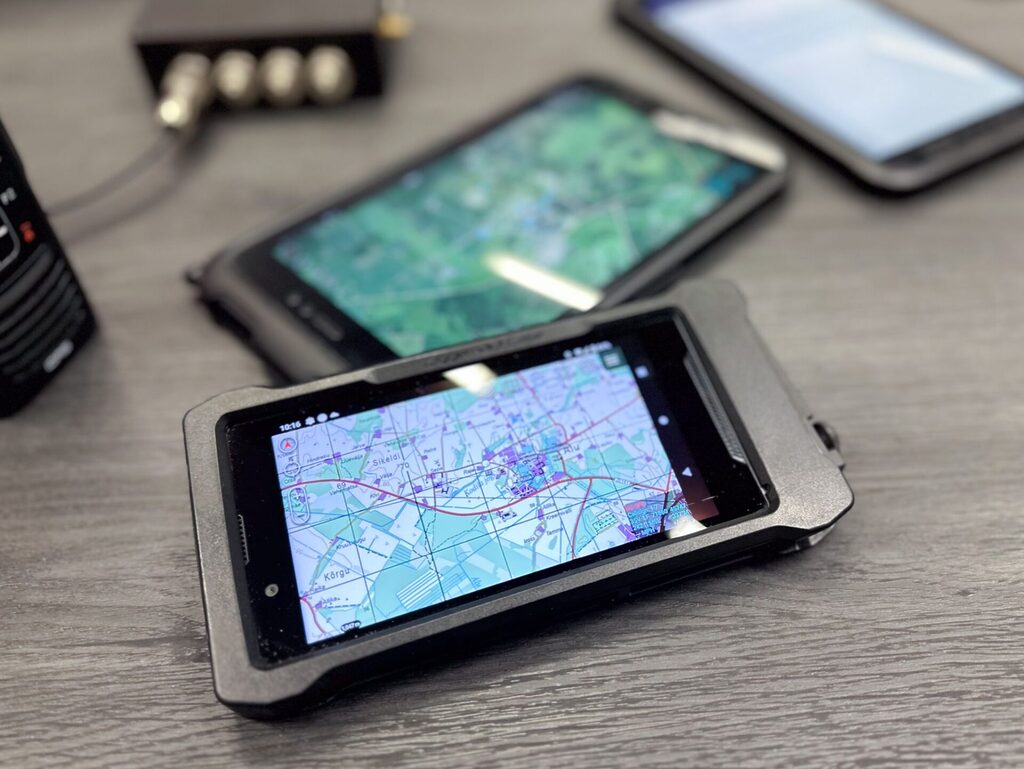
He further noted that the recent interruptions to GPS that were much talked about showed the benefit of the Wayren platform, because GPS frequencies are not the only ones that enemies might want to jam. And it is just this sort of jamming that the Wayren platform works against.
The company originally came out of the military. Härm used to work at Estonian Cyber Command, where he developed a national battle management system that was designed to digitalise the actions of the army from planning operations to carrying them out. The key point was for everything to work quickly and effectively. But when the system was put into operation during the Kevadtorm exercises, large holes appeared in the communications.
Every minute that is lost in transmitting critical information puts somebody’s life in danger. Our job is to make that time loss as small as possible.
“While the communications at the command post were more or less normal, the units on the battlefield had difficulties with communicating, and so the system was interrupted and it took a long time to exchange information”, said Härm to explain what inspired the creation of the Wayren technology. “This puts the lives of soldiers in danger, because they cannot report the results of shelling for example, or evacuate their wounded, and they have no picture of what is happening around them. Every minute that is lost in transmitting critical information puts somebody’s life in danger. Our job is to make that time loss as small as possible”, he explained.
First Estonia, then the whole world
Wayren actually applied to the NATO innovation accelerator for the second time this year, and it is obvious how much they benefited from the intervening time. Härm believes that an important reason they were chosen this time was that their technology had reached a better level of readiness. “We have done a lot of work with our clients and understood where the pinch points are”, he explained, noting that the company plans to run pilot projects with companies like Enefit and Viru Keemia Grupp alongside its work with the army.
Härm pointed out that the defence priorities currently dominate greatly within the company because that is where the original need for Wayren came from, as did its founder, but the company could have a civilian focus as well as a military one in future, whether that is balanced equally or even a little more in favour of the civilian side.
The fit with the NATO DIANA accelerator was very good because the aim of the programme is to find and accelerate the development across the alliance of innovative technologies that can be used both in everyday life in the civilian world, and also in national defence. “It is clear in the defence industry that technology with both civilian and military application is much better and more cost-effective than technology that only has military use. Purely military technology tends to be extremely complicated solutions that are too specific in their application and produced in small amounts, and that can be too expensive at the end of the day to have much of an impact”, said Härm. “Our ambition is to develop highly advanced defence technology that will put our basic frame in place from which we can start to expand”.
Härm thinks a realistic time frame for expansion is five to seven years. He says that the NATO DIANA accelerator will be extremely helpful for them. “A key point for us is the testing infrastructure that DIANA has, as there are testing centres where we can try out our ideas. The programme also gives access to a lot of resources like experts, networks and infrastructure. If we had to do everything ourselves but with limited resources, it would take a whole two years rather than just six months”, he explained, showing why the accelerator can give additional fuel for companies wanting to reach the stars.
He further observed that the accelerator will give them the chance to make lots of new contacts with end users. They are currently only really in active conversation with the Estonian defence forces, but the company hopes that the programme will let them make contacts in other NATO countries as well. Wayren’s ambitious gaze is roaming far and wide. “Our first goal is to focus on the European market, and the USA can come after that”, said Härm.
He commented that the 100,000 euros they will receive from the accelerator is primarily planned for developing the technology. If the company is actually successful in getting through to the second round of the accelerator, where there is additional funding available of up to 300,000 euros, it plans to add a sales team to the development team.
Companies that have received the funding will start work in December not only in the programme in Estonia, but also in accelerators in Denmark, Italy, Czechia, the Netherlands, Turkey, the United Kingdom, Germany, Belgium, Greece, Canada, and two locations in the USA.
The funding to start the accelerator in Estonia comes from the Ministry of Economic Affairs and Communications with support from the Ministry of Foreign Affairs, the Ministry of Defence and the city of Tallinn. Estonian contributors to building the pan-Alliance network of testing centres are Tallinn University of Technology, the University of Tartu, Foundation CR14, the National Defence College, the Estonian Academy of Security Sciences, the Estonian Aviation Academy, and Metrosert.
GaltTec CEO describes participating in the accelerator as a life-changing experience
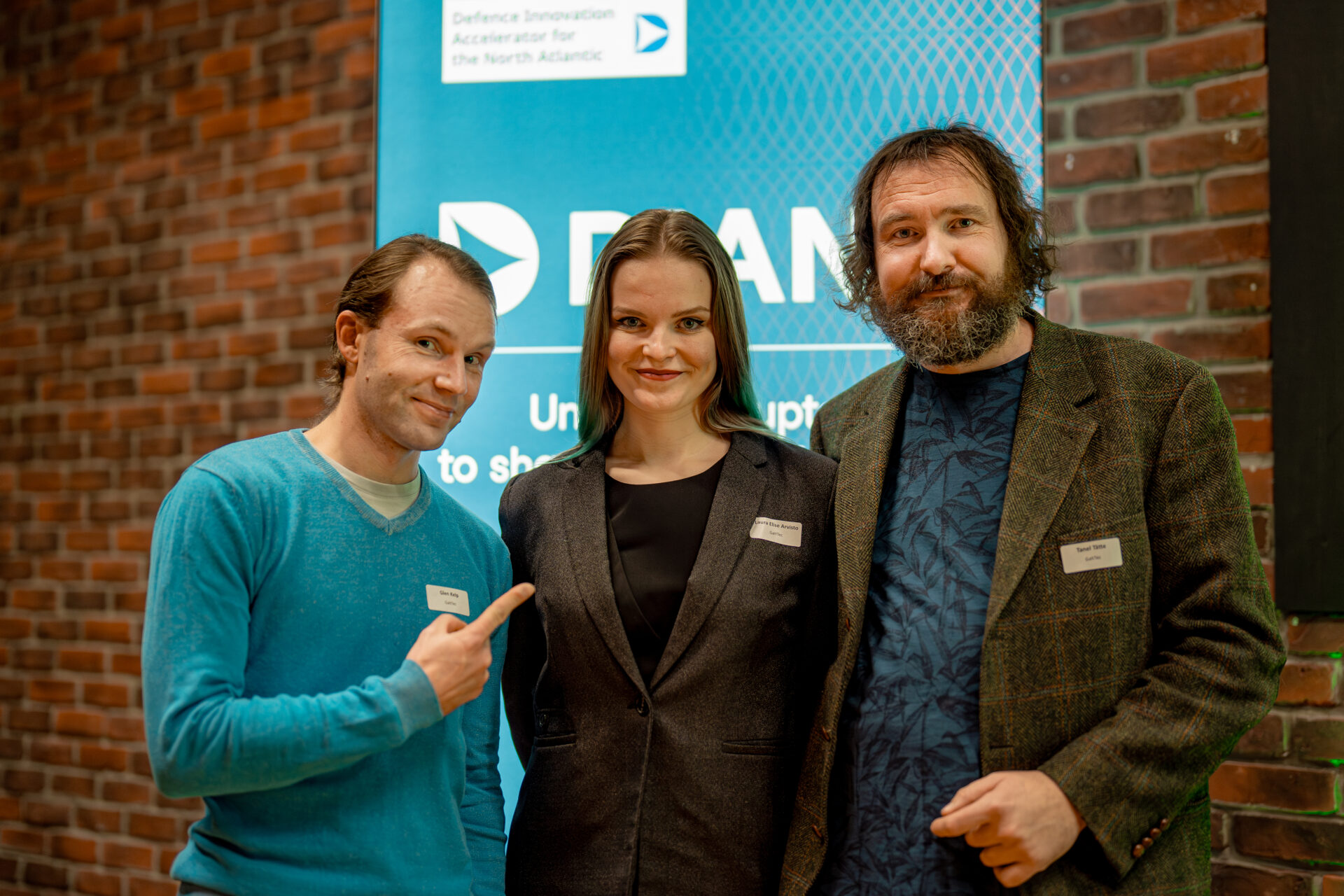
The only Estonian company accepted to the NATO DIANA innovation accelerator last year was GaltTec, which has successfully gained a further half million euros in investment on top of the original 100,000 euros in funding. “All of the opportunities that have come on top of what NATO DIANA offered are in the region of half a million euros, which is a very good start for a deep-tech company that is still in quite an early phase of development. NATO DIANA definitely played a huge role in raising our profile”, said company CEO Glen Kelp to Delfi.
Interest has been shown in GaltTec in its homeland of Estonia, but also elsewhere in Europe and in North America and Japan, and particularly in the energy sources for drones that it is making. “This is a very hot topic”, said Kelp.
The DIANA accelerator not only provided funding but also a great springboard for GaltTec to leap rapidly and confidently over the high barriers to entry that are faced in the defence industry. The company was earlier not really familiar with exactly how the industry worked, but the programme gave them a crash course in how to roll out their strategy for their dual-use technology.
Kelp believes that being in the NATO DIANA programme was simply life changing, and so he encourages all Estonian businesses starting up in the future to think about how they could also benefit from the innovation accelerator. “Anybody else wanting such a life-changing experience must absolutely take it seriously and go for it. It gave me so much more than I could ever have expected”, he said.
Source: Delfi.ee
By: Grete Põlluste, editor Jete-Ri Jõesaar
One in ten of the NATO DIANA teams will make their leaps forward in Estonia
NATO DIANA announced today the companies that will be coming to Estonia to develop their solutions in the second year of operations of their innovation accelerator. There are 13 accelerator sites operating across the countries of the Alliance this year, which is eight more than in the pilot year, and more than 2600 technological solutions applied for a place at one of them. Over 70 companies were eventually chosen, representing 20 different NATO member states, and seven of them will be starting their development path within the programme in Estonia. The NATO DIANA Estonian accelerator is led by the Tehnopol Startup Incubator working together with Sparkup Tartu Science Park.
All the companies from across the whole of the alliance that have been accepted to the accelerator are developing technologies with great potential that can find applications in everyday life in the civilian sector, as well as in the defence sector. The companies chosen this year have put forward solutions in the five areas of energy and power, data and information security, sensing and surveillance, human health and performance, and critical infrastructure and logistics. The three cross-cutting umbrella themes of these areas of technology are space, resilience and sustainability. The challenges were designed jointly by all the members of the alliance to address critical defence and security problems.
“Dual-use technologies and development of them have become increasingly important. We need to ensure the security of the state and at the same time support the development and application of products that have high value added from research and development. The NATO DIANA accelerator is a good international platform for talent where startup businesses and the research-intensive defence industry can come together, which then helps our economy grow and increases our security”, said Minister of Economy and Industry Erkki Keldo.
All the teams that have been accepted to the Estonian accelerator will receive funding of 100,000 euros from NATO DIANA, and the best can get as much as a further 300,000 euros in funding in the second phase of the programme. They will also get access to over 180 testing centres, a programme linking defence and business, and a network of mentors all across the alliance. DIANA acts as a bridge between universities, companies and the public sector in order to support the development of innovative technology that can help solve civilian and military problems and lay the path towards a sustainably secure world in the future.
“We are very pleased to see that despite the intense competition, two Estonian companies were also chosen for the NATO DIANA accelerator in this year’s round. Being chosen gives them a unique opportunity to develop their dual-use technologies and become part of the global NATO network. NATO DIANA has proven itself in its first year to be an excellent high-level programme for promoting innovation in defence. New deep-tech solutions are of critical importance for increasing defence capacity on the modern battlefield, and we are very excited to see the new and innovative solutions that will help to increase Estonia’s security and our capacity to defend ourselves”, said Ministry of Defence Hanno Pevkur.
The NATO DIANA Estonian accelerator is again being led by the Tehnopol Science and Business Park this year. The great strength of Estonia’s biggest business incubator is its deep understanding of startups and its long experience of supporting the growth of startups built around technology.
The decision by NATO DIANA to send about a tenth of the teams chosen to Estonia is a mark of recognition for the Estonian accelerator programme. “The pilot year of the accelerator produced very good results and demonstrated that the Estonian programme lays a clear foundation for companies to grow rapidly and develop. The programme this year has been tweaked even further using the experience gained during the pilot year and is designed to offer even greater value to the companies participating. That three of the companies from the accelerator here advanced to the growth phase of DIANA and each received up to an additional 300,000 euros is further recognition of the Estonian accelerator”, said Chief Executive Officer of Tehnopol Agnes Roos. She noted that the NATO DIANA accelerator in Estonia fits together with Tehnopol’s aim of supporting world-changing innovation.
The companies in the Estonian NATO DIANA accelerator will be: Scaleout from Sweden; Factiverse from Norway; Resquant, IS-Wireless, and Microamp Solutions from Poland; and Telearmy and Wayren from Estonia.
The innovative remote teledriving technology made by Telearmy and already used on the frontlines in Ukraine can be integrated with existing vehicles, allowing them to be driven remotely at long distance and at high-speed using Starlink or Radiolink.
Wayren is developing a platform to ensure uninterrupted communications in critical environments, preventing life-threatening delays in mines and on the battlefield.
The companies will start their development work in the accelerator in December. Other accelerators alongside the one in Estonia are also operating in Denmark, Italy, Czechia, the Netherlands, Turkey, the United Kingdom, Germany, Belgium, Greece, Canada, and the USA.
The accelerator in Estonia is run by the Tehnopol Startup Incubator working together with Sparkup Tartu Science Park. The funding to start the accelerator in Estonia comes from the Ministry of Economic Affairs and Communications with support from the Ministry of Foreign Affairs, the Ministry of Defence and the city of Tallinn. Estonian contributors to building the pan-Alliance network of testing centres are TalTech, the University of Tartu, Foundation CR14, the National Defence College, the Estonian Academy of Security Sciences, the Estonian Aviation Academy, and Metrosert.
Companies in the Estonian DIANA accelerator to receive 900,000 euros in additional funding from NATO
NATO DIANA named the ten most successful startups from the first phase of the accelerator, which between them received 3 million euros in additional funding. There were 44 companies that participated in the first phase of the pilot year of DIANA, of which nine attended the Estonian DIANA accelerator. Three of the startups in the Estonian accelerator are advancing to the new growth phase of DIANA, and each will get an additional grant of 300,000 euros.
“It is very good to see that a third of the startup companies from the Estonian accelerator have progressed to the new growth phase. This shows how important it is in developing dual-use technologies to provide an international platform for talent. The NATO DIANA accelerator is a good example of how startup businesses and the research-intensive defence industry can come together, because together they can help our economy grow and increase our security”, said Minister of Economy and Industry Erkki Keldo.
The innovative companies selected for the growth phase of DIANA will get additional financial support and a specially tailored programme that has been created to increase their success in developing their business and entering the market. The companies were selected after a thorough assessment process that analysed the potential of their technology, their commercial progress and plans, their opportunity for entering the market, and their fit with the needs of the alliance. The companies that did not get through to the next phase of the accelerator can join the steadily growing DIANA community and be part of a strong ecosystem stretching across 32 nations.
Head of the Tehnopol Startup Incubator and the NATO DIANA Estonian accelerator Anne-Liisa Elbrecht said that the selection proves the strength of the Tehnopol accelerator programme. “All nine of the companies that were in our accelerator were strong and made great leaps in development in their business during the programme. That a third of them were chosen for the growth phase shows the superbly high level of our programme, our mentors and our team”, she said. She added that leading the NATO DIANA accelerator fits with the Tehnopol aim of supporting world-changing technologies and innovation.
The companies that made it through to the next phase from the Estonian DIANA accelerator were Goldilock, Revobeam and Lobster Robotics. The British company Goldilock is developing a patented cyber security tool for protecting critical assets and data. By physically segmenting digital assets and networks without using the internet, Goldilock ensures that those networks and assets remain secure, undetectable, and inaccessible to enemies. The Dutch company Lobster Robotics is developing autonomous, lightweight, cost-effective and extraordinarily precise underwater robots for photographing the seabed, giving a quantitative picture through visual mapping. The Polish company Revobeam is focused on developing energy-efficient, resilient and cheap antennae that are designed for unmanned platforms and IoT devices, and give them protection against hybrid attacks and increase the area coverage for wireless communications.
“We are proud to be part of the NATO DIANA ecosystem and it is amazing and exciting that after an intense and rewarding six months at the DIANA accelerator in Tehnopol, we can continue our journey and enter the GROW phase. Expanding the existing network that we built during the acceleration phase and facing new opportunities will make a significant difference as we continue to scale and develop our antennas, which will make a difference in the face of the security and defence challenges of today. We look forward to working with the DIANA team over the coming months to drive the commercialisation and adoption of our innovation and finally build a solid business in the defence market”, said Mateusz Rzymowski, CEO of Revobeam.
“We have learned so much in the accelerator. It took six months but it felt a lot longer, and the Tehnopol accelerator played a big part in that. Tallinn is our second home now, and the cohort is a tight community. And our hard work has paid off, since selection for the Grow programme means we have got the tools that we need to keep up the pace set during the accelerator, and to capitalise on the many testing, demo and commercial opportunities that we have ahead of us”, said Stephan Rutten, Co-Founder and CEO of Lobster Robotics.
There were 2613 applications submitted to the NATO DIANA accelerator from 30 countries, with 74 companies from Estonia applying. The 2025 DIANA cohort will start in January.
The NATO DIANA (Defence Innovation Accelerator for the North Atlantic) accelerator in Estonia is led by the Tehnopol Startup Incubator working together with Sparkup Tartu Science Park, and the business accelerator Startup Wiseguys. The funding to start the accelerator in Estonia comes from the Ministry of Economic Affairs and Communications with support from the Ministry of Foreign Affairs, the Ministry of Defence and the city of Tallinn. Estonian contributors to building the pan-Alliance network of testing centres are TalTech, the University of Tartu, Foundation CR14, the National Defence College, the Estonian Academy of Security Sciences, the Estonian Aviation Academy, and Metrosert.
